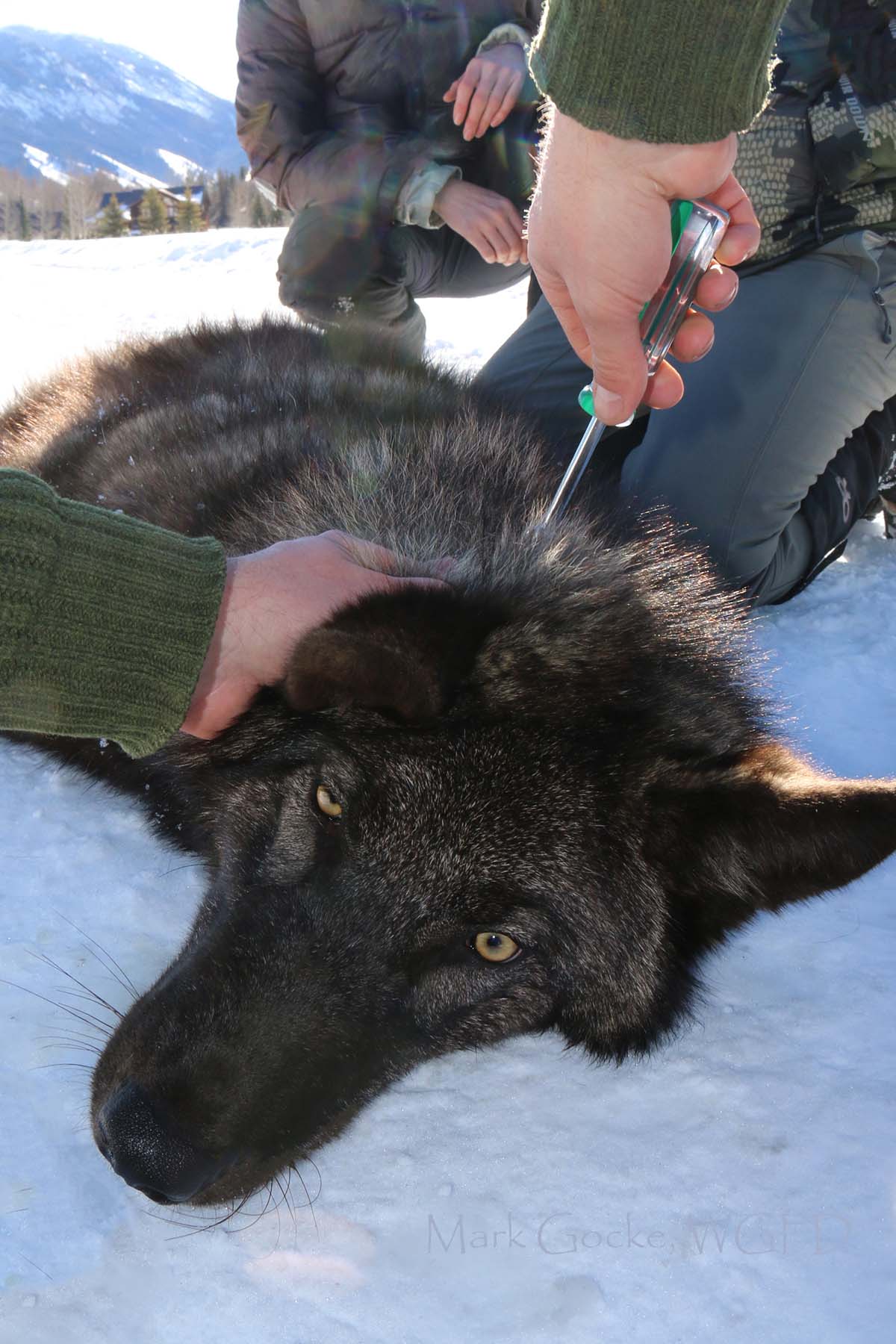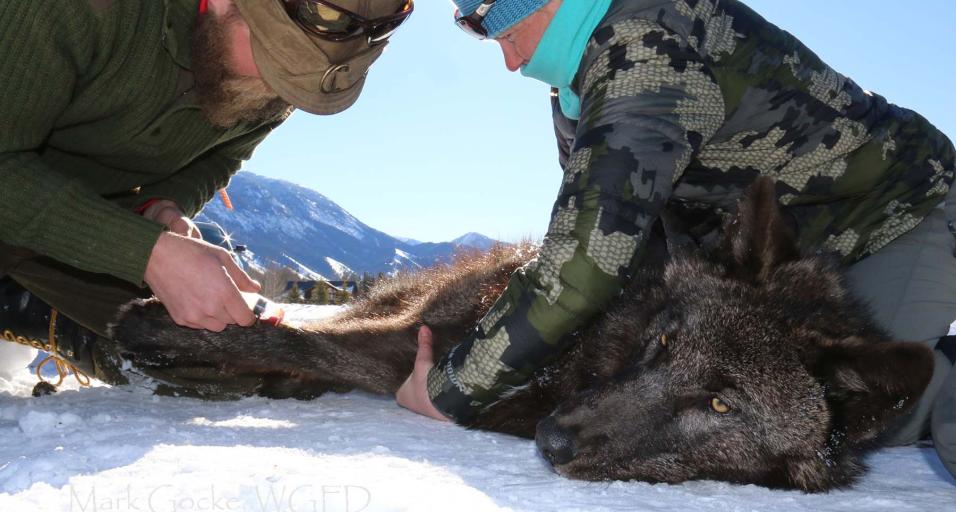Game & Fish Continues Wolf Monitoring Effort
In April of 2017, the Wyoming Game and Fish Department resumed management authority over wolves in Wyoming, outside of Yellowstone National Park and the Wind River Indian Reservation. A large part of management is monitoring wolf numbers, distribution, survival and overall demographics of the population to inform management decisions.
One tool the Wyoming Game and Fish Department's Large Carnivore Section employs in monitoring is the capturing and radio-marking of wolves. Ideally, the objective is to have at least one wolf collared in every known pack, but wolves can be difficult to find and capture, even with a helicopter. In addition, the Department’s Large Carnivore biologists also put on boots, skis or snowshoes and follow-up on reported sitings to help gain accurate counts of wolves, as well as assist with aerial captures.

Recently, several wolves were captured by a helicopter capture crew in those areas where the Game and Fish Department is responsible for monitoring and managing the state's wolf population. Most of the captures are handled in the field away from people by a contracted professional wildlife capture crew. The crew will typically net-gun the animals, collect blood and other biological samples, fit it with a GPS collar and release it on-site. The battery life will allow the GPS collar to record the animals' travels for approximately 2-3 years.
The hope is to put out as many as 40 additional radio collars on wolves over the course of the winter to evaluate new packs and changing distributions, and to derive an accurate count for wolves in the trophy game management area.
One tool the Wyoming Game and Fish Department's Large Carnivore Section employs in monitoring is the capturing and radio-marking of wolves. Ideally, the objective is to have at least one wolf collared in every known pack, but wolves can be difficult to find and capture, even with a helicopter. In addition, the Department’s Large Carnivore biologists also put on boots, skis or snowshoes and follow-up on reported sitings to help gain accurate counts of wolves, as well as assist with aerial captures.
Recently, several wolves were captured by a helicopter capture crew in those areas where the Game and Fish Department is responsible for monitoring and managing the state's wolf population. Most of the captures are handled in the field away from people by a contracted professional wildlife capture crew. The crew will typically net-gun the animals, collect blood and other biological samples, fit it with a GPS collar and release it on-site. The battery life will allow the GPS collar to record the animals' travels for approximately 2-3 years.
The hope is to put out as many as 40 additional radio collars on wolves over the course of the winter to evaluate new packs and changing distributions, and to derive an accurate count for wolves in the trophy game management area.
Mark Gocke, Public Information Specialist, 307-733-2321

